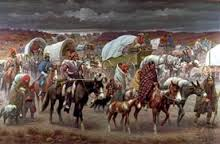
At the beginning of the 1830s, close to 125,000 Native Americans lived on thousands of acres of land in Georgia, Tennessee, Alabama, North Carolina and Florida; land their ancestors had lived on and cultivated for generations. By the end of the decade, very few natives were anywhere in the southeastern United States. Working on behalf of white settlers who wanted to grow cotton on the Indians’ land, the federal government forced them to evacuate their homelands and disperse thousands of miles to a specially designated “Indian territory” or indian reservation. They had to cross the Mississippi River and go farther westward. This treacherous and sometimes deadly journey is known as the Trail of Tears.
Their land, located in parts of Georgia, Alabama, North Carolina, Florida and Tennessee, was valuable, and it grew immensely to be more desirable as white settlers took control of the region. Many of these whites focused their work by growing cotton to help their fortunes, and they did not care how “civilized” their native neighbors were: They wanted that land and they would do almost anything to get it. They stole livestock; burned and looted houses and towns; and unlawfully occupied a settlement on a piece of land that did not belong to them.
State governments joined in this effort to force Native Americans out of the South. Several states passed laws restricting Native American sovereignty and rights and intended to invade their territory. In a few cases, such as Cherokee Nation v. Georgia (1831), the U.S. Supreme Court opposed to these practices and proclaimed that native nations were their own sovereign nations “in which the laws of Georgia (and other states) can have no force on.” Even though all that was said, southern states were adamant to take ownership of Indian lands and would go to great lengths to secure this territory.
By 1840, tens of thousands of Native Americans had been forced off of their land in the southeastern states and forced to move across the Mississippi to Indian territory. The federal government promised that their new land would remain left alone forever, but as the line of white settlements pushed out westward, “Indian country” shrank and shrank. In 1907, Oklahoma became a state and Indian territory was gone for good.
A Brief History of the Trail of Tears – Cherokee Nation
